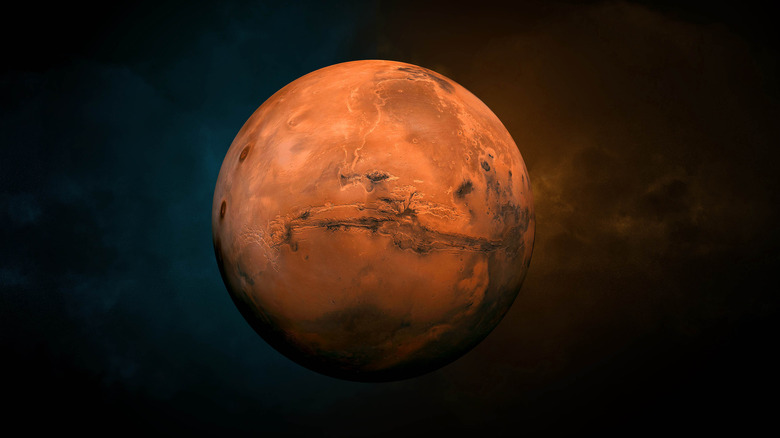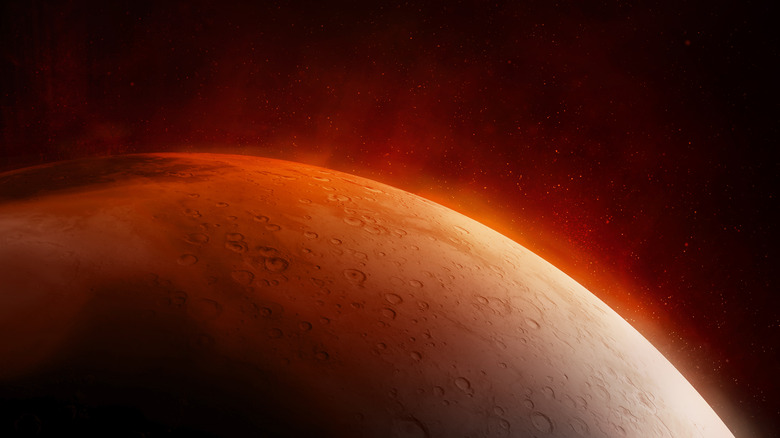3D Printing Could Solve This Huge Mars Problem
In order to get tools and materials out of Earth's orbit and to space, NASA has to spend around $54,000 for about 2.2 pounds of material (via ScienceDaily). Because of this, scientists are always looking for ways to more easily have necessities available in space. One option that is being explored is the possibility of 3D printing in space, using materials found there instead of bringing them out from Earth, reducing the initial load as well as costs. This is a necessary route to explore, as a manned Mars space mission would require that needed materials be created during travel instead of brought up from Earth.
This idea was first tested in 2011 with moon material by a research team headed by Amit Bandyopadhyay, who is also behind the research on using 3D printed materials on Mars. In 2011, the team used imitation moon dust, also known as lunar regolith, in order to 3D-print materials, as explained by Washington State University. Since then, this technology has been implemented on the International Space Station, allowing for the creation of material via 3D printing when needed. Recently, advancements in using this technology with the regolith on Mars have proven to be quite successful, making for exciting possibilities for the future of space travel.
3D printing tools using Mars rock
In this research, Bandyopadhyay and his team used imitation Martian dust at concentrations from 5% to 100% combined with titanium alloy to create materials, reported Newsweek. They then heated this mixture to 3,632 degrees Fahrenheit, and molded it into different formations. Once it had cooled, the researchers tested the material to determine its strength. They found that the materials made with 100% Mars material would easily crack, however they reasoned that this could still be used for coating objects to protect against radiation, per Newsweek.
The materials made out of 5% Martian regolith, however, were found to be extremely durable, in fact even more so than just the titanium alone (via Newsweek). This would allow for the creation of resilient yet lightweight material using a 3D printer and material on Mars. There's also the possibility of using different types of metals within the Mars rock mixture to create material with other properties. Furthermore, this means that if there were a future Mars mission, it would be a possibility to make some materials using 3D printing right on the planet. There is plenty of room for further development in this technology as well, and perhaps additional research will make the prospect of travel to Mars even more feasible.

